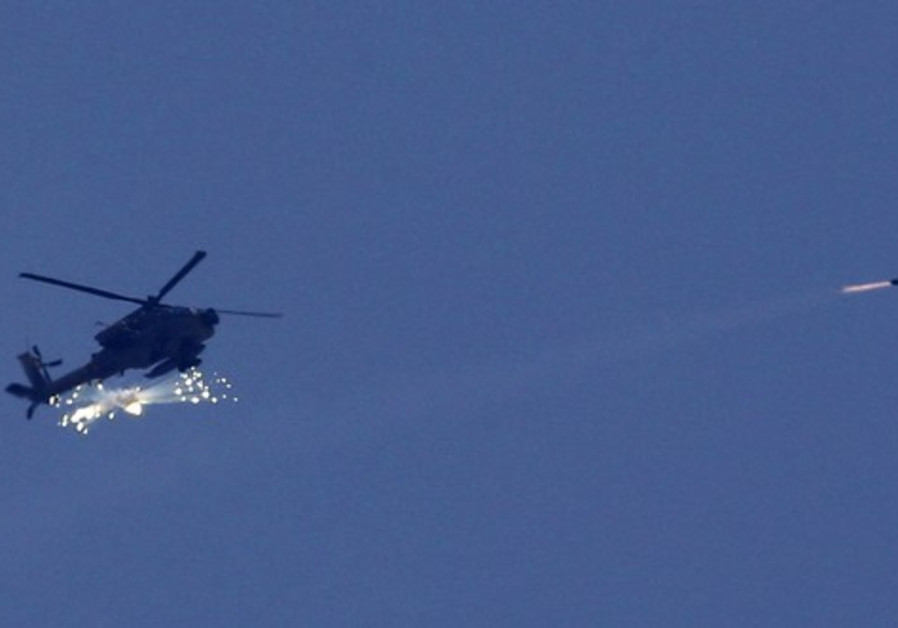In a rare event, The Jerusalem Post has received special access to the IDF’s internal file, including raw transcripts of 16 of the 20 IDF personnel under interrogation.

On July 16, 2014, in the middle of the 2014 Gaza war between Israel and Hamas, the IDF fired two missiles, with a short interval between each missile, killing four unarmed Palestinian minors on a Gaza beach.
The incident occurred in view of a throng of journalists who copiously recorded the event and whose photos went viral.
Since then, the incident has been in dispute between the IDF legal division (which said it mistook the Palestinians for Hamas naval commandos), and legal center Adalah, which represents the Palestinian victims’ families and the UN Human Rights Council (who suggest the IDF displayed a reckless indifference to ensuring that the Palestinians were not civilians.)
Most importantly, the International Criminal Court prosecution is expected to weigh in on the issue at some point.
In a rare event, The Jerusalem Post has received special access to the IDF’s internal file, including raw transcripts of 16 of the 20 IDF personnel under interrogation (four transcripts were omitted based on national security claims) without a spokesman to “clean up” their testimonies.
Even the 16 transcripts were semi-censored based on national security claims, but a distinct and newly-revealed picture emerges from the Post’s special access.
Earlier, a Saturday report by The Intercept marked a new turn in the issue when it was the first to gain access to the IDF’s internal file.
Questions pertained to whether or not the IDF had doubts: about the identity of those being attacked, about the scope of the area in which attacking the four minors was allowed and whether the staff acted sufficiently in resolving those doubts.
After a full review of the file, including most importantly regarding those issues, the statements of Israel Air Force witnesses 16 (Captain “A”), 17 (Captain “M”) and 18 (Major “S”), the Post concludes that a major source of confusion was the interrogation itself.
What did the interrogation itself look like?
Overall, though it was slow moving, the IDF did an impressive job interrogating 20 witnesses from several disparate operations, intelligence analysis and intelligence operations units spread in different parts of the country.
The failure to ask standard follow-up questions in the interrogation leaves some issues open to interpretation. Nevertheless, the overall thrust of the testimonies appears to be that, both what The Intercept called a drone strike team as well as the intelligence team were broadly convinced that the four minors were Hamas naval commandos regarding both missile strikes.
Where is the confusion?
In the most important quote, Captain M manifestly contradicts himself regarding the chronology of events in a way that leaves multiple potential interpretations of what happened.
Not a contradiction that shows a cover-up, just a failure to make sense.
After saying that the second missile had already been fired, Captain M says that the strike team asked him and his air force team another question about whether they could fire.
This obviously cannot be the case because Captain M said the second missile had already been fired.
Captain M also provides a confusing run-on-sentence answer that leaves open multiple possible interpretations about what he was referring to when he says “non-participating persons” – was he referring to the fleeing Palestinians or to other theoretical Palestinians near the beach?
Next, on its face, Captain M’s narrative is that between the first and second missile strike, the strike team called his air force team to verify the intelligence picture and whether it was legitimate to fire a second missile on the Palestinians as they started to run away from the first strike explosion.
The strike team asked if the Palestinians were still “incriminated” [legitimate targets] and it appears that Captain M and his team confirmed that.
Was the question about the civilian/combatant identity of the fleeing Palestinians or about other considerations, such as: 1) concerns that the fleeing Palestinians might reach a civilian area, or 2) Palestinian civilians witnessing the first strike might come into the danger zone for a peek – before a second missile could be launched.
Rather than asking Captain M to clarify what he meant with these above anomalies, the interrogator moves on. There is no implication or feel of any cover-up here but rather that the interrogator seems to have just not interrogated very well.
Objectively speaking, it appears that the most accurate reading of all of the material, including Captain A and Major S’s testimony, is that all of the doubts may have only been about concerns that the fleeing Palestinians would reach a civilian area or that Palestinian civilians from outside the beach might enter the beach area.
However, with the case’s closure on appeal to Attorney-General Avichai Mandelblit – probably eventually facing a petition to the High Court of Justice and absolutely facing an analysis by the ICC prosecution – the IDF might save itself some trouble later by reopening the probe now, even if only to go back to these witnesses and fully clarify these and some other issues which were left up in the air.
Adalah Attorney Muna Hadad has said: “The testimonies reveal that there were no Israeli soldiers in the area and there was no immediate danger posed to anyone…There was…no urgency in carrying out the attack. It was possible to have obtained further intelligence on the nature of the targets in order to verify whether they were combatants or not.”
The Jerusalem Post has learned that the IDF view was that the intelligence picture, however mistaken retrospectively, was strongly convincing in real time and that there was increased urgency to remove Hamas naval forces from the battle after they had recently mounted a surprise attack on an IDF position at Zikim Beach in the South.
As reported by The Jerusalem Post
